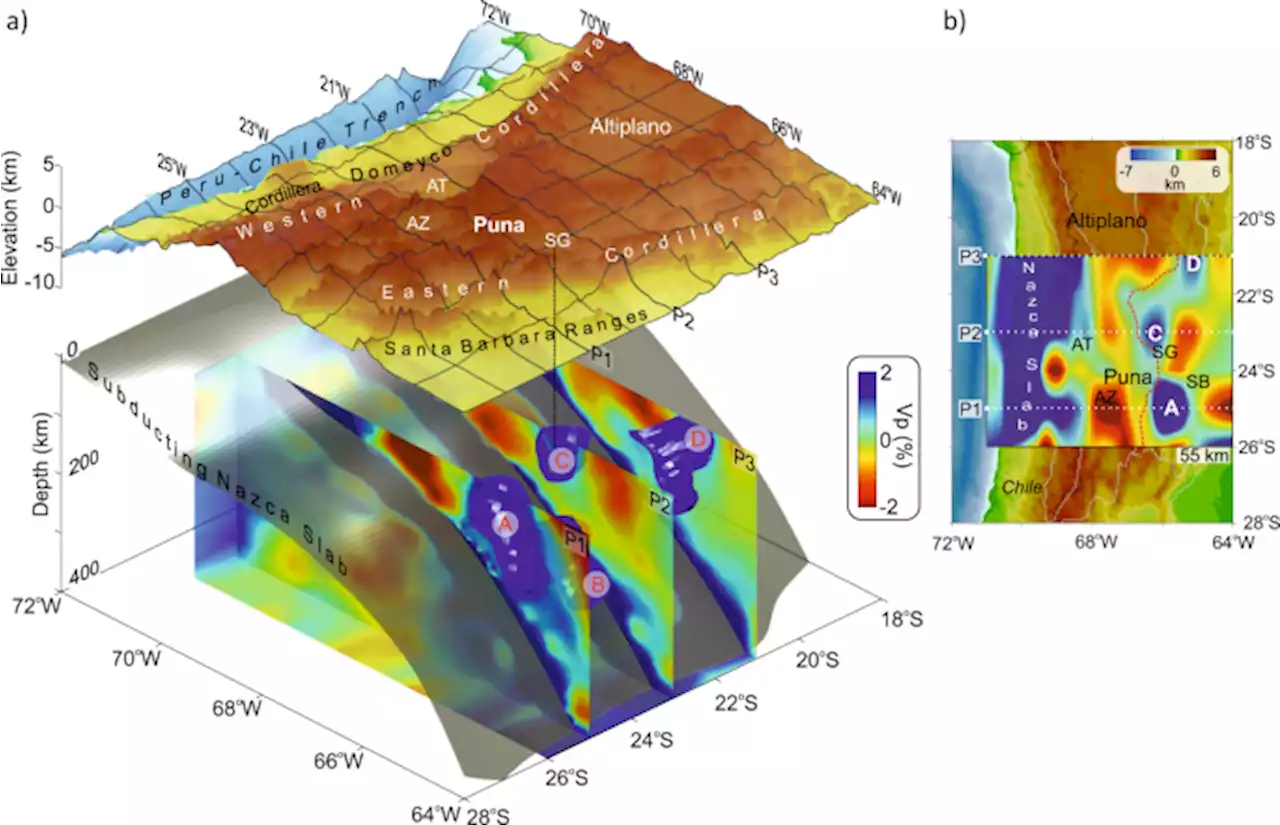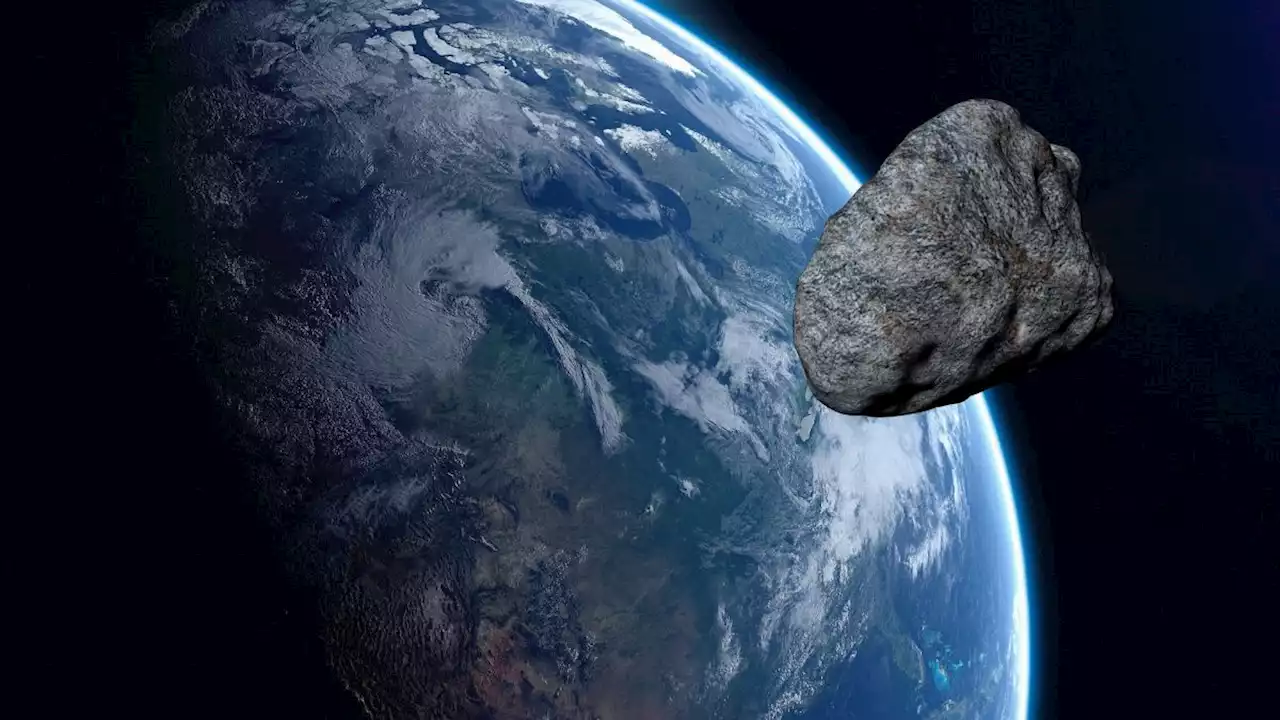Beneath the Andes mountains in South America, Earth's crust is dripping into the planet's interior.
, where the edge of one tectonic plate slides beneath the edge of the plate adjacent. This deforms the crust, pushing it up and creating mountains and other geological features.to suggest that the formation of the Central Andes was not one long, slow process but occurred in pulses throughout the Cenozoic era, Earth's current geological period, starting around 66 million years ago.
"Various studies invoke removal of the lithosphere to account for the widespread, non-subduction related surface deformation and evolution of the plateaus,""Further, crustal shortening in the Arizaro Basin interior is well documented by folding and local thrust faults, but the basin is not bounded by known tectonic plate boundaries, indicating there is a more localized geodynamic process occurring.
The model consisted of a tank and layered materials. A thick, viscous silicone polymer fluid called polydimethylsiloxane formed the lower mantle. The solid upper mantle was a mix of polydimethylsiloxane and modeling clay. Finally, a layer of sand-like spheres of silica and ceramic was the analog for Earth's crust.
Österreich Neuesten Nachrichten, Österreich Schlagzeilen
Similar News:Sie können auch ähnliche Nachrichten wie diese lesen, die wir aus anderen Nachrichtenquellen gesammelt haben.
 Symptomatic lithospheric drips triggering fast topographic rise and crustal deformation in the Central Andes - Communications Earth & EnvironmentSeveral central Andean basins may have formed from the coupling of crustal deformation to dripping of the upper mantle lithosphere, according to three- dimensional scaled analogue experiments
Symptomatic lithospheric drips triggering fast topographic rise and crustal deformation in the Central Andes - Communications Earth & EnvironmentSeveral central Andean basins may have formed from the coupling of crustal deformation to dripping of the upper mantle lithosphere, according to three- dimensional scaled analogue experiments
Weiterlesen »
 RS Recommends: Cariuma Launches New Earth-First Sneaker Collab With PeanutsCariuma’s limited edition collaboration with Peanuts features Snoopy and his friends on a variety of shoe styles and T-shirts
RS Recommends: Cariuma Launches New Earth-First Sneaker Collab With PeanutsCariuma’s limited edition collaboration with Peanuts features Snoopy and his friends on a variety of shoe styles and T-shirts
Weiterlesen »
 A powerful solar flare is heading to Earth, space weather experts warnA famous space weather expert has warned that a powerful solar storm is heading to Earth, and it could cause radio blackouts.
A powerful solar flare is heading to Earth, space weather experts warnA famous space weather expert has warned that a powerful solar storm is heading to Earth, and it could cause radio blackouts.
Weiterlesen »
 Why the Arctic Is Warming 4 Times as Fast as the Rest of EarthThe loss of sea ice is exposing darker waters, which absorb more of the sun’s energy. It’s a devastating feedback loop with major consequences for the planet.
Why the Arctic Is Warming 4 Times as Fast as the Rest of EarthThe loss of sea ice is exposing darker waters, which absorb more of the sun’s energy. It’s a devastating feedback loop with major consequences for the planet.
Weiterlesen »
 May's total lunar eclipse watched by Earth-observing satellitesSamantha Mathewson joined Space.com as an intern in the summer of 2016. She received a B.A. in Journalism and Environmental Science at the University of New Haven, in Connecticut. Previously, her work has been published in Nature World News. When not writing or reading about science, Samantha enjoys traveling to new places and taking photos! You can follow her on Twitter Sam_Ashley13.
May's total lunar eclipse watched by Earth-observing satellitesSamantha Mathewson joined Space.com as an intern in the summer of 2016. She received a B.A. in Journalism and Environmental Science at the University of New Haven, in Connecticut. Previously, her work has been published in Nature World News. When not writing or reading about science, Samantha enjoys traveling to new places and taking photos! You can follow her on Twitter Sam_Ashley13.
Weiterlesen »
 Chinese project will bounce signals off asteroids to see how dangerous they are to EarthMore than 20 large radar antennas will work together to image rocky threats from space.
Chinese project will bounce signals off asteroids to see how dangerous they are to EarthMore than 20 large radar antennas will work together to image rocky threats from space.
Weiterlesen »
